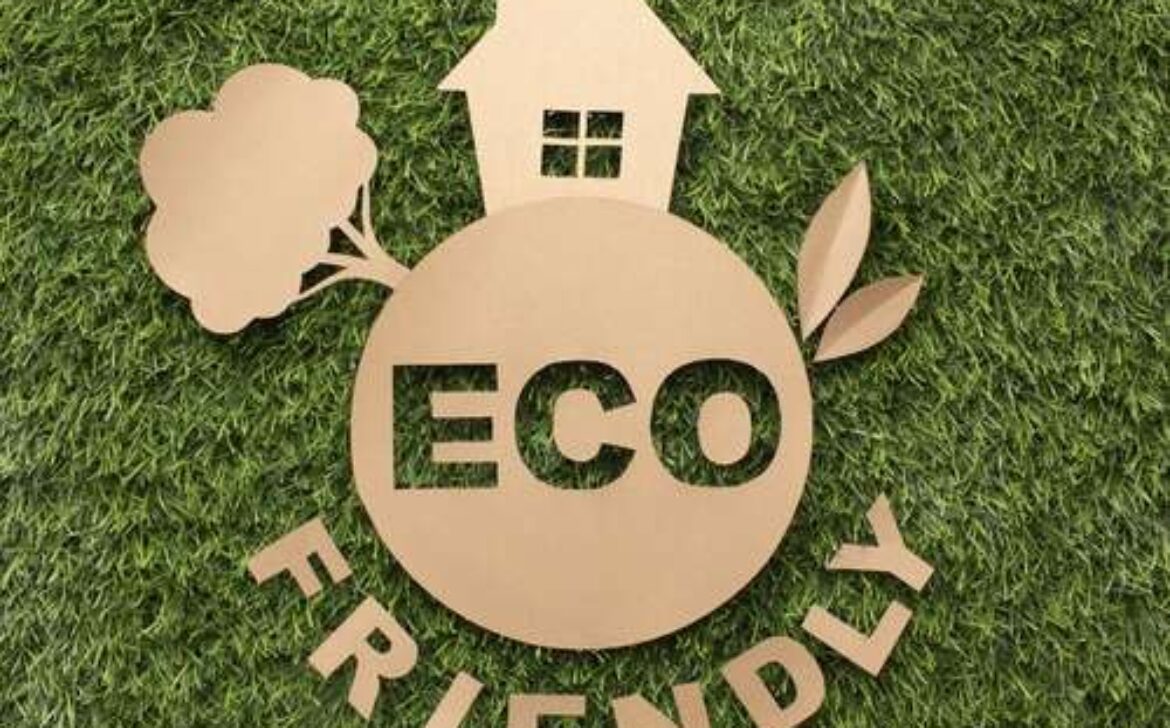Eco-Friendly Living: Small Changes for a Greener Lifestyle
Living an eco-friendly lifestyle is becoming increasingly important as we strive to protect the planet and preserve its resources for future generations. By making small changes in our everyday lives, we can contribute to a greener and more sustainable world. This article will explore various ways in which you can adopt an eco-friendly lifestyle and make a positive impact on the environment. Eco-friendly living encompasses a range of practices that aim to minimize our impact on the environment and promote sustainability. It involves making conscious choices in our daily lives to reduce waste, conserve resources, and protect natural ecosystems. By embracing an eco-friendly lifestyle, we can contribute to the global effort of mitigating climate change and preserving the planet for future generations. One of the simplest ways to reduce your energy consumption is by replacing old, inefficient appliances with energy-efficient models. Look for appliances with an Energy Star label, as they are designed to consume less energy without compromising performance. Another effective way to reduce your carbon footprint is by utilizing renewable energy sources such as solar or wind power. Consider installing solar panels on your roof or purchasing renewable energy from a certified provider. Proper insulation can significantly improve the energy efficiency of your home. Insulate walls, windows, and doors to prevent heat loss during the winter and reduce the need for excessive cooling during the summer. Recycling and composting are essential practices for waste reduction. Sort your recyclables and ensure they are properly disposed of in recycling bins. Composting organic waste not only reduces landfill waste but also produces nutrient-rich compost for your garden. Single-use plastics, such as plastic bags and water bottles, contribute to pollution and harm wildlife. Opt for reusable alternatives like cloth bags and stainless steel water bottles to reduce plastic waste. Instead of throwing away items you no longer need, consider donating or selling them. This not only reduces waste but also benefits others who can use these items. Whenever possible, choose walking, cycling, or public transportation over driving. These modes of transportation produce fewer greenhouse gas emissions and promote a healthier lifestyle. If driving is necessary, carpooling or car-sharing can help reduce the number of vehicles on the road, leading to lower emissions and less traffic congestion. Electric vehicles (EVs) are an excellent choice for reducing your carbon footprint. They produce zero tailpipe emissions and are becoming more accessible as charging infrastructure expands.
We do not inherit the Earth from our ancestors; we borrow it from our children.
– Native American Proverb Choose to support local businesses and brands that prioritize sustainability and environmental responsibility. By doing so, you contribute to the local economy and reduce the carbon footprint associated with long-distance transportation. Opt for organic products that are grown without harmful pesticides or genetically modified organisms. Similarly, look for fair trade certifications, ensuring that workers receive fair wages and work in safe conditions. Excessive packaging contributes to waste and pollution. Choose products with minimal packaging or packaging made from recycled materials. Buy in bulk whenever possible to reduce packaging waste. Leaking faucets and pipes waste a significant amount of water. Regularly check for leaks and repair them promptly to conserve water. Install rain barrels or other rainwater harvesting systems to collect rainwater for outdoor use, such as watering plants and gardens. Upgrade to water-efficient appliances and fixtures, such as low-flow toilets and showerheads. These can help reduce water consumption without sacrificing functionality. Reducing meat consumption and incorporating more plant-based meals into your diet can have a significant positive impact on the environment. Plant-based diets require fewer resources and produce fewer greenhouse gas emissions. Consider starting a small garden or growing herbs and vegetables in containers. It promotes self-sufficiency and reduces the carbon footprint associated with long-distance transportation of produce. Buy locally grown, seasonal produce from farmers’ markets or join a community-supported agriculture (CSA) program. This supports local farmers and reduces the environmental impact of transporting food over long distances. Avoid using synthetic fertilizers and pesticides in your garden. Opt for organic alternatives that are safer for the environment, wildlife, and your health. Choose native plant species for your garden as they are adapted to the local climate and require less water and maintenance. They also provide habitats for local wildlife. Design your garden to attract and support local wildlife, such as birds, butterflies, and bees. Provide food, water sources, and shelter through the use of native plants, bird feeders, and water features. Educate others about the importance of eco-friendly living and share tips and resources to help them adopt sustainable practices. Encourage friends, family, and colleagues to join the movement. Get involved in local or global environmental campaigns. Whether it’s volunteering for a beach cleanup or supporting initiatives to protect endangered species, every effort counts. Stay informed about environmental policies and support initiatives that promote sustainability. Vote for politicians who prioritize green policies and engage with organizations working towards a greener future. Embracing an eco-friendly lifestyle is not only beneficial for the environment but also for our own well-being. By making small changes in our daily lives, we can collectively make a significant impact on the planet. From conserving energy and reducing waste to making sustainable choices as consumers, each action contributes to a greener future for all.Introduction: Why Eco-Friendly Living Matters
Energy Conservation: Reducing Your Carbon Footprint
Switching to Energy-Efficient Appliances
Using Renewable Energy Sources
Insulating Your Home
Waste Reduction: Minimizing Landfill Contributions
Recycling and Composting
Avoiding Single-Use Plastics
Donating or Selling Unwanted Items



Sustainable Transportation: Choosing Greener Options
Walking, Cycling, and Public Transportation
Carpooling and Car-Sharing
Investing in Electric Vehicles
Conscious Consumerism: Making Informed Choices
Supporting Local and Sustainable Businesses
Choosing Organic and Fair Trade Products
Reducing Packaging Waste
Water Conservation: Preserving Our Most Valuable Resource
Fixing Leaks and Dripping Faucets
Collecting Rainwater
Using Water-Efficient Appliances and Fixtures
Sustainable Food Choices: Eating Green
Eating More Plant-Based Meals
Growing Your Own Food
Supporting Local Farmers and Markets
Eco-Friendly Gardening: Nurturing Nature
Using Organic Fertilizers and Pest Control
Planting Native Species
Creating a Wildlife-Friendly Habitat
Education and Advocacy: Spreading the Green Message
Sharing Knowledge and Resources
Participating in Environmental Campaigns
Supporting Green Policies and Initiatives
Conclusion

























